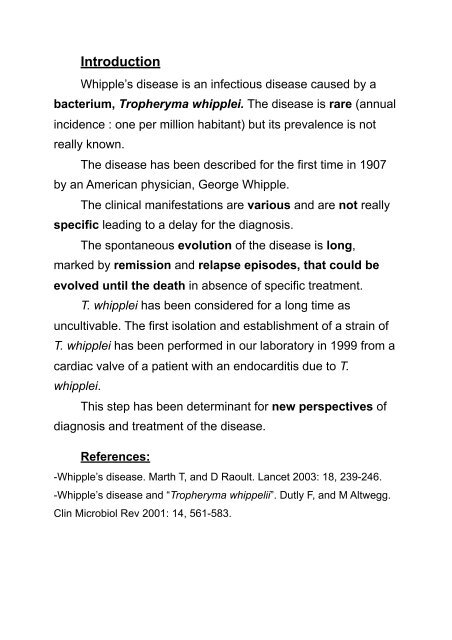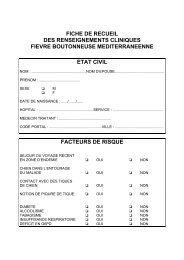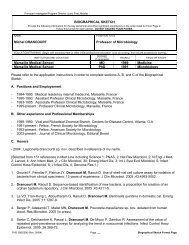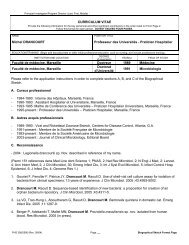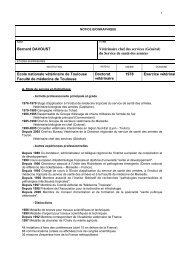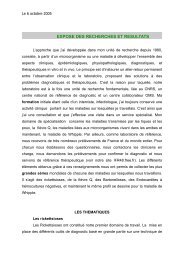Whipple's disease and Tropheryma whipplei
Whipple's disease and Tropheryma whipplei
Whipple's disease and Tropheryma whipplei
Create successful ePaper yourself
Turn your PDF publications into a flip-book with our unique Google optimized e-Paper software.
Introduction<br />
Whipple’s <strong>disease</strong> is an infectious <strong>disease</strong> caused by a<br />
bacterium, <strong>Tropheryma</strong> <strong>whipplei</strong>. The <strong>disease</strong> is rare (annual<br />
incidence : one per million habitant) but its prevalence is not<br />
really known.<br />
The <strong>disease</strong> has been described for the first time in 1907<br />
by an American physician, George Whipple.<br />
The clinical manifestations are various <strong>and</strong> are not really<br />
specific leading to a delay for the diagnosis.<br />
The spontaneous evolution of the <strong>disease</strong> is long,<br />
marked by remission <strong>and</strong> relapse episodes, that could be<br />
evolved until the death in absence of specific treatment.<br />
T. <strong>whipplei</strong> has been considered for a long time as<br />
uncultivable. The first isolation <strong>and</strong> establishment of a strain of<br />
T. <strong>whipplei</strong> has been performed in our laboratory in 1999 from a<br />
cardiac valve of a patient with an endocarditis due to T.<br />
<strong>whipplei</strong>.<br />
This step has been determinant for new perspectives of<br />
diagnosis <strong>and</strong> treatment of the <strong>disease</strong>.<br />
References:<br />
-Whipple’s <strong>disease</strong>. Marth T, <strong>and</strong> D Raoult. Lancet 2003: 18, 239-246.<br />
-Whipple’s <strong>disease</strong> <strong>and</strong> “<strong>Tropheryma</strong> whippelii”. Dutly F, <strong>and</strong> M Altwegg.<br />
Clin Microbiol Rev 2001: 14, 561-583.


